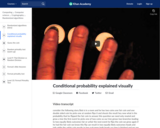
A visual explanation of conditional probability.
- Subject:
- Applied Science
- Computer Science
- Material Type:
- Lesson
- Provider:
- Khan Academy
- Provider Set:
- Code.org
- Author:
- Brit Cruise
- Date Added:
- 07/14/2021

A visual explanation of conditional probability.
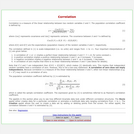
The applets in this section allow you to see how different bivariate data look under different correlation structures. The Movie applet either creates data for a particular correlation or animates a multitude data sets ranging correlations from -1 to 1.

You can find statistics in every day life - this example explains how to calculate the chance of a member of a committee is receiving a bribe. This resource is from PUMAS - Practical Uses of Math and Science - a collection of brief examples created by scientists and engineers showing how math and science topics taught in K-12 classes have real world applications.
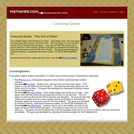
These games support student development of number sense and the concept of mathematical operations
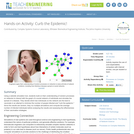
Using a website simulation tool, students build on their understanding of random processes on networks to interact with the graph of a social network of individuals and simulate the spread of a disease. They decide which two individuals on the network are the best to vaccinate in an attempt to minimize the number of people infected and "curb the epidemic." Since the results are random, they run multiple simulations and compute the average number of infected individuals before analyzing the results and assessing the effectiveness of their vaccination strategies.
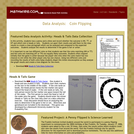
Using two different coins and recording the results of both coins helps students dispel this initial misconception as they analyze the graph results. Class discussion should focus on analyzing the data to determine if the game is fair or not. Directions and gameboard are included in the download.
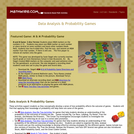
These activities support students as they conceptually develop a sense of how probability affects the outcome of games. Students will find that applying their knowledge of probability will help them win some of the games
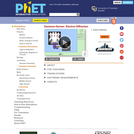
Simulate the original experiment that proved that electrons can behave as waves. Watch electrons diffract off a crystal of atoms, interfering with themselves to create peaks and troughs of probability.

A review activity for college probability and statistics. Topics include:~Plausible values for population mean based on a confidence interval~The effects of confidence level on the width/precision of the confidence interval~Notations for sample statistics and population parameters~Comparing p-values to a significance level to make a hypothesis test decision~Evaluating the strength of statistical evidence in a hypothesis test(Thanks to Dr. Justin Grieves, math professor at Charleston Southern University, for providing problems for the activity, the use of his name and picture.)
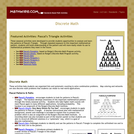
These activities help students use organized lists and systematic counting to solve combination problems. Map coloring and networks are also discrete math problems that students can relate to real-world applications.

Discrete stochastic processes are essentially probabilistic systems that evolve in time via random changes occurring at discrete fixed or random intervals. This course aims to help students acquire both the mathematical principles and the intuition necessary to create, analyze, and understand insightful models for a broad range of these processes. The range of areas for which discrete stochastic-process models are useful is constantly expanding, and includes many applications in engineering, physics, biology, operations research and finance.

Explore tunneling splitting in double well potentials. This classic problem describes many physical systems, including covalent bonds, Josephson junctions, and two-state systems such as spin 1/2 particles and ammonia molecules.

ERBA (ESD.72) emphasizes three methodologies - reliability and probabilistic risk assessment (RPRA), decision analysis (DA), and cost-benefit analysis (CBA). In this class, the issues of interest are: the risks associated with large engineering projects such as nuclear power reactors, the International Space Station, and critical infrastructures; the development of new products; the design of processes and operations with environmental externalities; and infrastructure renewal projects.
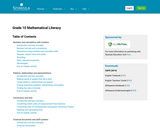
Mathematical literacy textbook for grade 10. This resource includes an interactive online textbook that can be read on personal computers, tablets, and mobile phones. Downloadable textbook and and teachers' guide also available in PDF format, in both English and Afrikaans
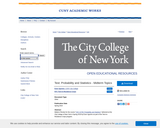
Midterm Exam Review for the course "CS 217 – Probability and Statistics for Computer Science" delivered at the City College of New York in Spring 2019 by Evan Agovino as part of the Tech-in-Residence Corps program.
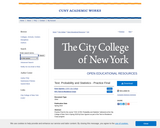
Practice Final Exam for the course "CS 217 – Probability and Statistics for Computer Science" delivered at the City College of New York in Spring 2019 by Evan Agovino as part of the Tech-in-Residence Corps program.

The applet in this section allows you see how probabilities are determined from the exponential distribution. The user determines the mean of the distribution and the limits of probability. Three different probability expressions are available.

This resource is a video abstract of a research paper created by Research Square on behalf of its authors. It provides a synopsis that's easy to understand, and can be used to introduce the topics it covers to students, researchers, and the general public. The video's transcript is also provided in full, with a portion provided below for preview:
"Can your country’s tax laws help you find true love? A research team based in Europe has found that a government’s tax scheme surrounding marriage could affect a couple’s decision to tie the knot. The majority of countries across the globe have a tax code that changes according to marital status -- usually in the form of either a tax penalty or tax bonus. With a penalty, a couple will end up paying more in taxes than two similarly compensated single individuals, and with a bonus, they will pay less. To get to the heart of whether the financial implications connected to such tax laws influence a couple’s desire to get married, the researchers applied a rigorous theoretical model they called the marriage proposal game. In the game, two potential spouses – Sam and Robin – can either get married, live together without formal marriage, or break up..."
The rest of the transcript, along with a link to the research itself, is available on the resource itself.
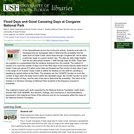
SSAC Geology of National Parks module/Geology of National Parks course. Students calculate probabilities using USGS hydrograph data, a spreadsheet of daily stage heights, and the COUNTIF function.

This video lesson shows students that math can play a role in understanding how an infectious disease spreads and how it can be controlled. During this lesson, students will see and use both deterministic and probabilistic models and will learn by doing through role-playing exercises. The primary exercises between video segments of this lesson are class-intensive simulation games in which members of the class 'infect' each other under alternative math modeling assumptions about disease progression. Also there is an occasional class discussion and local discussion with nearby classmates.